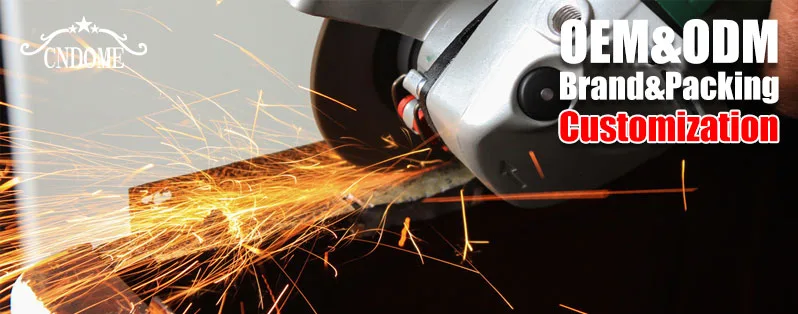Grinding wheels, the unsung heroes of metalworking and fabrication, play a pivotal role in shaping, sharpening, and polishing materials. Yet, amidst the sparks and precision, there’s a question that often lingers in the minds of craftsmen and hobbyists alike: Does the grinding wheel have a lifespan? In this exploration, we delve into the intriguing world of grinding wheels to uncover the factors that influence their longevity and the signs that indicate when it’s time to bid farewell.
Understanding the Anatomy:
Before we dive into the lifespan of grinding wheels, it’s essential to understand their composition. Typically made from abrasive particles bonded together, grinding wheels come in various types, each designed for specific tasks. Common materials include aluminum oxide, silicon carbide, and diamond.
Factors Influencing Lifespan:
Material Compatibility:
The type of material being ground is a crucial factor. Harder materials like steel or tungsten carbide can wear down a grinding wheel more rapidly than softer materials.
Wheel Composition:
Different bonding agents and abrasive types affect a grinding wheel‘s durability. A wheel designed for heavy stock removal might wear faster but will be more efficient in its intended application.
Grinding Pressure:
Excessive pressure during grinding can generate heat, causing the wheel to wear out more quickly. Maintaining the right balance of pressure is vital for extending the lifespan of the wheel.
Cooling and Lubrication:
Adequate cooling and lubrication help dissipate heat generated during grinding, preventing the wheel from overheating and degrading prematurely.
Signs of Wear and Tear:
Reduced Efficiency:
If you notice a decrease in the grinding wheel‘s performance, such as slower material removal or inconsistent results, it may be a sign that the wheel is reaching the end of its lifespan.
Changes in Surface Finish:
A grinding wheel approaching the end of its life may produce a rougher surface finish or leave behind unwanted marks on the workpiece.
Vibration and Noise:
Increased vibration or unusual noises during grinding could indicate irregularities in the wheel’s structure, suggesting wear and the need for replacement.
Visible Wear Indicators:
Some grinding wheels have wear indicators built into their design, such as color changes or markings. Keeping an eye on these indicators can help you gauge the wheel’s remaining lifespan.
Conclusion:
In conclusion, the lifespan of a grinding wheel is influenced by a multitude of factors, ranging from material compatibility to proper usage techniques. Regular inspection and maintenance are key to ensuring optimal performance and safety. While grinding wheels do have a finite lifespan, understanding the factors at play empowers craftsmen to maximize their efficiency and make informed decisions about when to replace them. So, the next time you embark on a grinding project, consider the lifespan of your trusty grinding wheel as a vital aspect of achieving precision and excellence in your work.



